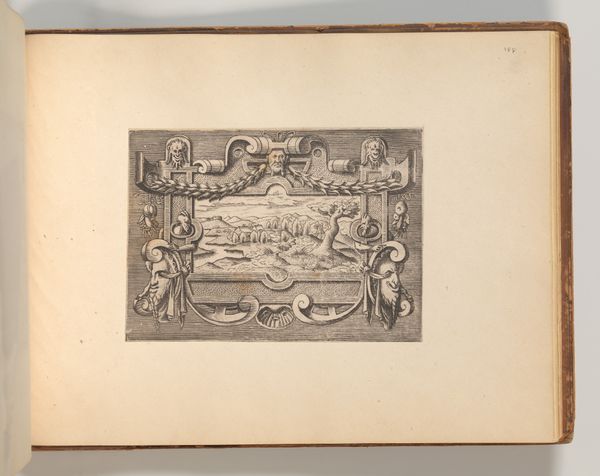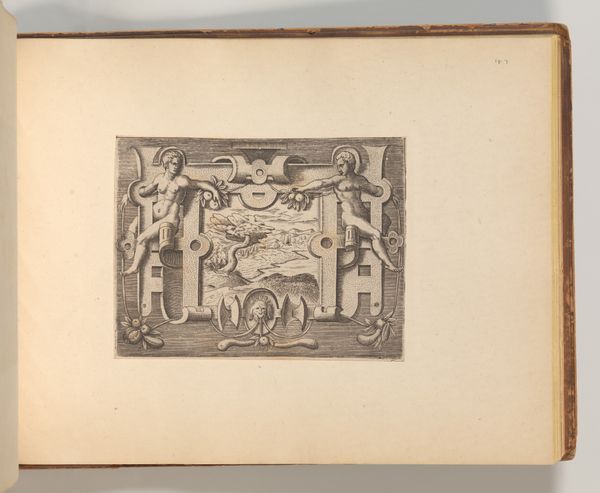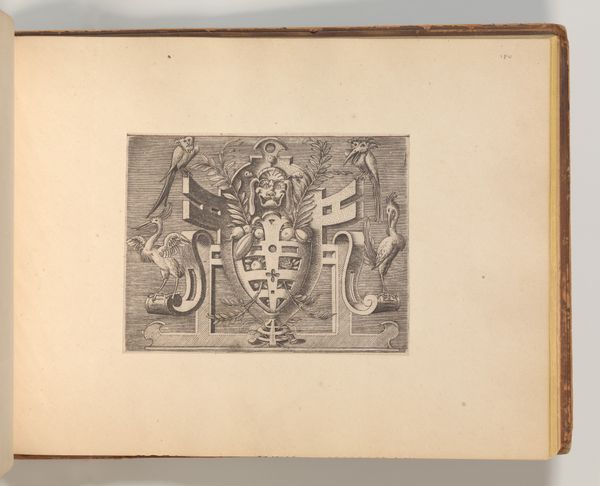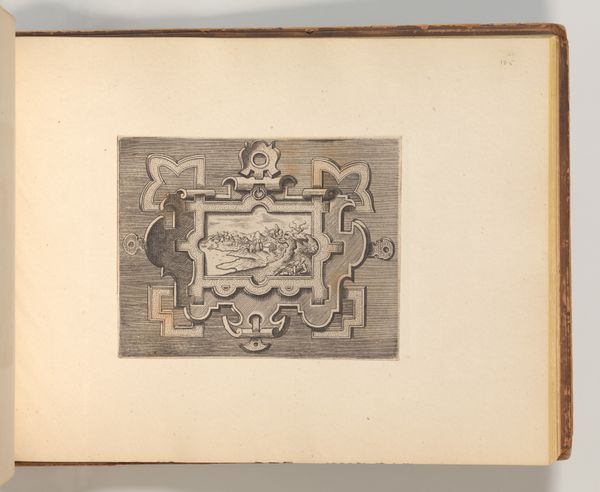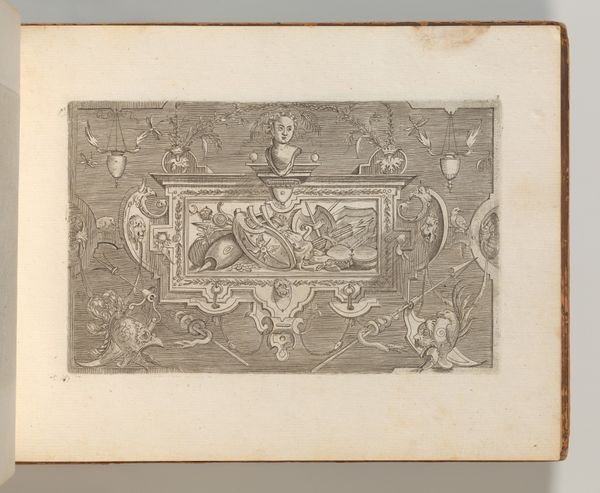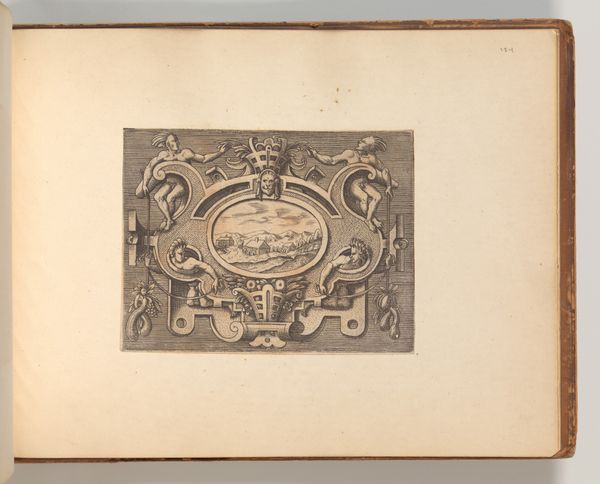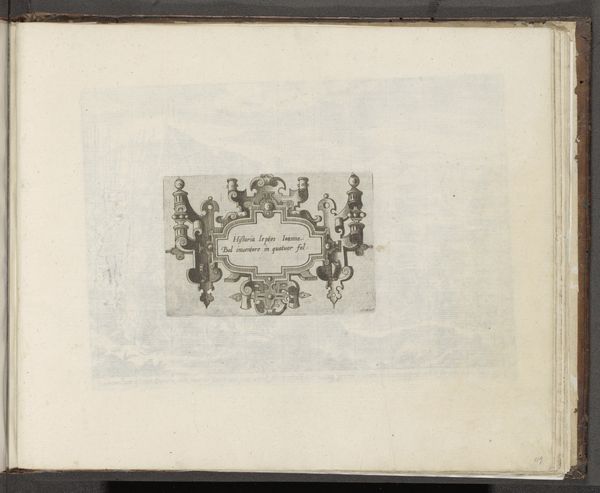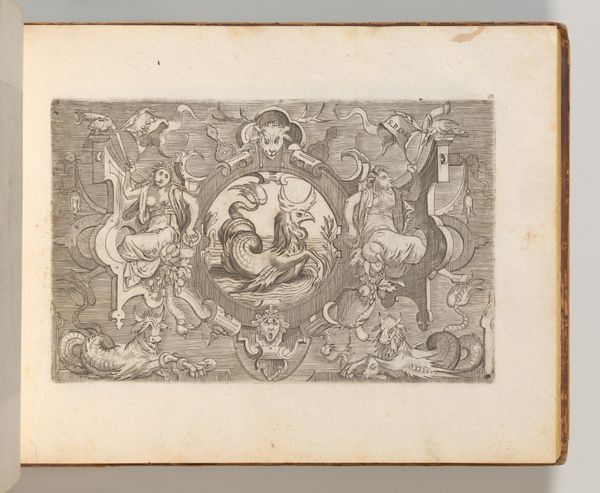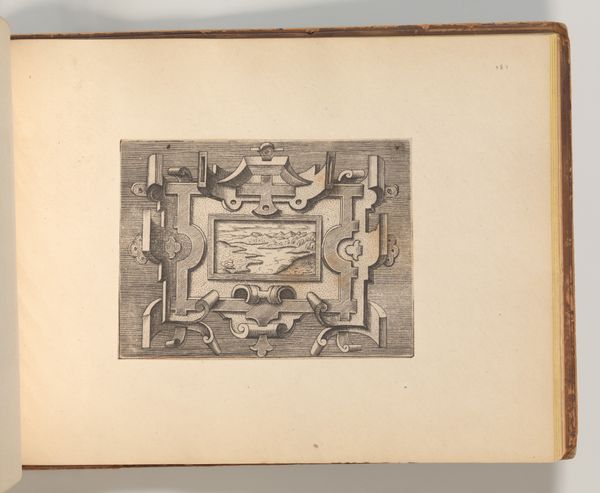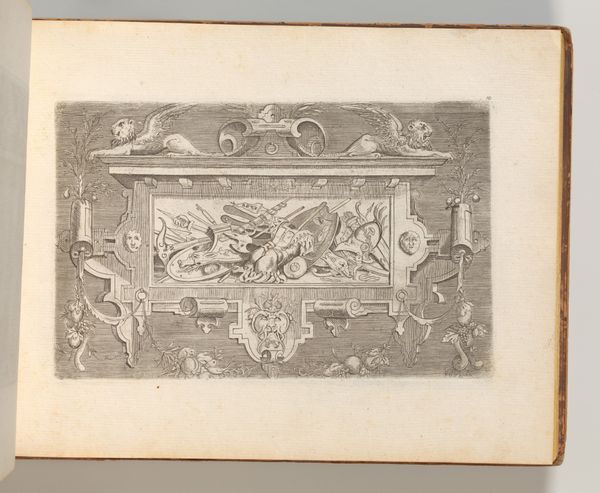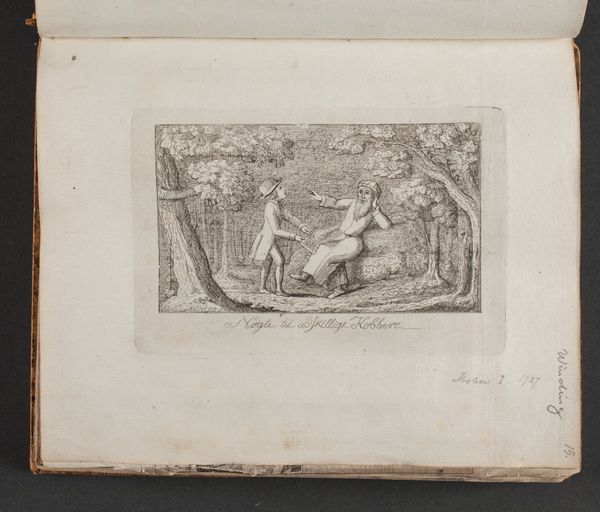
Series of Cartouches, in: Targhe ed altri ornati di varie e capricciose invenzioni (Cartouches and other ornaments of various and capricious invention, page 50) 1540 - 1550
0:00
0:00
drawing, ornament, print, metal, engraving, architecture
#
drawing
#
ornament
#
ink paper printed
# print
#
metal
#
form
#
11_renaissance
#
engraving
#
architecture
Dimensions: Sheet: 7 7/8 × 10 5/16 in. (20 × 26.2 cm) Plate: 5 1/8 × 11 13/16 in. (13 × 30 cm) Overall: 8 1/4 × 10 5/8 in. (21 × 27 cm)
Copyright: Public Domain
This engraving by Cornelis Bos showcases a series of cartouches, designs popular in the 16th century that acted as frames for inscriptions or images. Note the grotesque figures intertwined with foliage. This motif, drawn from ancient Roman art, experienced a revival during the Renaissance. You see, these were not mere decorations. The grotesque, with its hybrid forms and playful inversions of nature, embodies a deeper psychological tension. It represents the chaotic undercurrents of the subconscious, a world where boundaries blur. In ancient Rome, the grotesque symbolized a release from the strictures of classical order, a space for the imagination to run wild. Observe the recurrence of this motif throughout history. From the margins of medieval manuscripts to the ornamental details of Baroque architecture, the grotesque reappears, each time subtly altered by the cultural anxieties and aspirations of its age. The enduring appeal of the grotesque lies in its capacity to express the complex, often contradictory, nature of the human psyche. It is a reminder that beneath the surface of reason and order lies a world of primal urges and untamed desires.
Comments
No comments
Be the first to comment and join the conversation on the ultimate creative platform.


